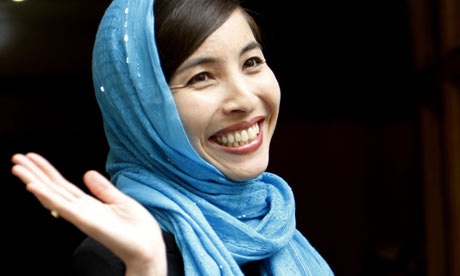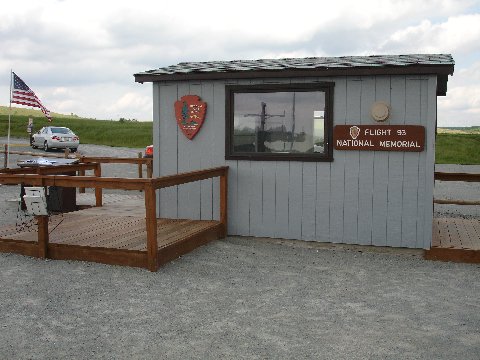There is a field in southwestern Pennsylvania, near Shanksville, where forty individuals — 37 American citizens and three visiting citizens from other countries — gave their lives to protect our country on Sept. 11, 2001. They were not members of the US Military. They were not trained in combat techniques. They were ordinary citizens who said goodbye to their families that morning knowing they would be back home in a matter of days or weeks, not having one single inkling that they would be called to an act of heroism that day. They were the passengers and crew of United Flight 93. The humble memorial that has sprung up in that field to honor them is indescribably heartfelt and immeasurably powerful.
The drive to the memorial has to be something that one chooses to make. It is about 90 miles from Pittsburgh, a city that the crashing plane flew directly over that day. It is not something that you just happen upon, driving down the interstate, on your way to somewhere else. One must seek it out. And over 150,000 people a year do so. I went there today. I am glad that I did.
When you go there (and hopefully, after you read this post, you WILL go there), over the crest of a hill after a drive through a beautiful rural landscape, you will see, off in the distance, a tiny fenced-in area marked by two flagpoles in the middle of a deserted rolling hillside. A little parking lot is there beside the tiny temporary structure provided by the National Park Service after it became apparent that Americans would visit this site in droves to pay homage to these heroes. The site is staffed by local resident volunteers, known as “Ambassadors” on their badges, who felt called to learn the tragic facts of the event and greet those who come to pay their respects.
Within the fence, there are a few large stone plaques, engraved with formal tributes, donated by survivors of the flight 93 heroes. The tops of these stones are covered with tribute items — coins from police departments, fire departments, veterans groups, etc. — that are heavy enough to weather the steady winds on that hillside. There are crosses, necklaces, and rosaries draped on them, and poems, letters and paintings on sticks stuck into the ground in front of them. The sheer volume of them is overpowering, made even more so when you consider that many of them have been removed due to decay and necessity over the years. (No tribute left is discarded; they are all “cleaned, catalogued and stored. The Flight 93 National Memorial Collection already numbers over 25,000 objects.”)
There is a double row of forty metal angels on posts in the ground, each inscribed with one of the names of the individuals who died on that day. A crescent of benches face the angels, and if you sit there, you can see, just above the angels, the American flag planted some 500 yards away to mark the crash site. Only immediate family members of the deceased are allowed to visit the actual site because it is now “hallowed ground.” It is the place where, through no choice of their own, the forty people on Flight 93 are buried.
But the dominant structure within the tribute area is a large shelving fence, approximately 32 feet long and 10 feet high with a chain-link backing. A bulletin board is permanently on the fence where patches can be pinned. License plates, caps, American flags, laminated poems, signed T-shirts, school class posters signed by students, small stone angels — anything anyone wants to leave as a tribute — adorn it.
But what brought me to uncontrollable tears were the toys attached to the chain links with plastic ties. The stuffed animals. The action figures. Children had come there and left their most prized possessions. Batman. Spider-Man. A little teddybear. Darth Vader. Even a figurine of the WWE’s Heartbreak Kid, Shawn Michaels. (As a wrestling fan, this moved me beyond all reason.) The purity of these gifts reminded me of my own children and brought crashing home the reality of all that these forty people had to leave behind that day, knowing that they were going to die and storming the cockpit in order to save as many others as they could from the horrible loss they knew their loved ones were about to face.
For the first half-hour or so that I was there, I was unable to speak. I wandered from object to object, overcome. There were only one or two other people there and I eavesdropped on some of what the “Ambassador” volunteer for the day, Clarence, had to say to them. I signed the guest book, and after seeing the tribute fence, I decided to leave the cap I was wearing, and to write a feeble tribute inside it. Clarence mistakenly thought I was leaving, and said, “Thanks for coming, sir.” I tried to say that I was not leaving, but my voice would not break through the lump in my throat, and I sort-of waved vague hand gestures of not leaving which were undoubtedly unintelligible. Clarence, nonplussed, no doubt having seen this emotion before, came up and patted me on the back and said, “You feel this very deeply, don’t you?”
I could only muster a nod. He clapped me on the shoulder and moved on.
As I clipped my stupid hat onto the chain-link fence, I kept thinking to myself, as I had ever since I had gotten there, would I have been so brave? Would I have crumpled in the back of the plane and cried, staying on the phone with whoever I could reach, praying to God to deliver me back to my wife and children? Would I have begged for my life? Or would I have fought back? Would I have attacked the cockpit knowing I was going to die anyway? What would I have done?
As I stood up from my moment of prayer at the fence, I realized that Ambassador Clarence was talking to a group of about eight that had arrived. They were sitting on the benches while he gave his talk. I blearily sat in the back to listen to what he said.
He talked of the facts of the event, how fast the plane was going, how far it had burrowed into the ground when it crashed. He said that if the plane had been in the air for four more seconds, it would have crashed into the town of Shanksville, where there was a K-12 school in session at that hour. He told us the first person murdered on the plane was passenger Mark Rothenberg, seated in front of the terrorists in first class, whom they slaughtered simply because he was an Orthodox Jew. He spoke of how the FBI had become 95 percent sure that the terrorists on Flight 93 had targeted the Capitol building, where there was a joint session of Congress that day. If these terrorists had been successful, 535 members of congress, their aides and staffers, one entire branch of the three branches of our government, could have perished that day.
He told some individual stories of the passengers and crew: how Flight Attendant Cee Cee Lyles, who had done a fellow attendant a favor and taken her shift that day, had left a message on her home answering machine telling her husband how much she loved him and that she hoped to see his face again with God someday; how Capt. Jason Dahl had changed his shift to fly on Sept. 11th so he could celebrate his fifth wedding anniversary with his wife on Sept. 14th; how Donald and Jean Peterson, the only married couple on the flight, were flying to San Francisco for training to become missionaries. And he spoke of how Flight 93 had been delayed for 25 minutes, which made it possible for the passengers on-board to know, through their cell phone calls to loved ones, that the attacks on the WTC towers and the Pentagon had already occurred.
And how then, immortally, they decided, probably by a quintessentially American show of hands, to take the actions which came to be encapsulated in the words of passenger Todd Beamer: “Let’s roll.”
Ambassador Clarence also told us how he had been there one day in early 2008 when a line of eight black SUVs came rolling up the hill and parked in front of the Memorial, and how John and Cindy McCain had gotten out of one of them. And that John McCain had said to him, “I am not here for politics. Please don’t think that of me. I am here because I was in the Capitol building that day, and I owe these men and women my life. I am here to pay my respects.” There were no photographs.
And at the end of his talk, Clarence said precisely what I had been saying in my heart ever since I had arrived. And forgive me for paraphrasing Ambassador Clarence as best I can:
Everyone who comes here always asks the same question: ‘if I had been on that plane, would I have done what the passengers of Flight 93 did? When confronted with evil men, would I have allowed them to do their will? Or would I have fought against them, even if I knew that I was going to die?’ Either you stand up against evil, or you lay down in front of it; there really is not a third choice.
What would I have done? And if my time comes, unexpectedly, as it came for the passengers of Flight 93…
What will I do?








COMMENTS
Please let us know if you're having issues with commenting.